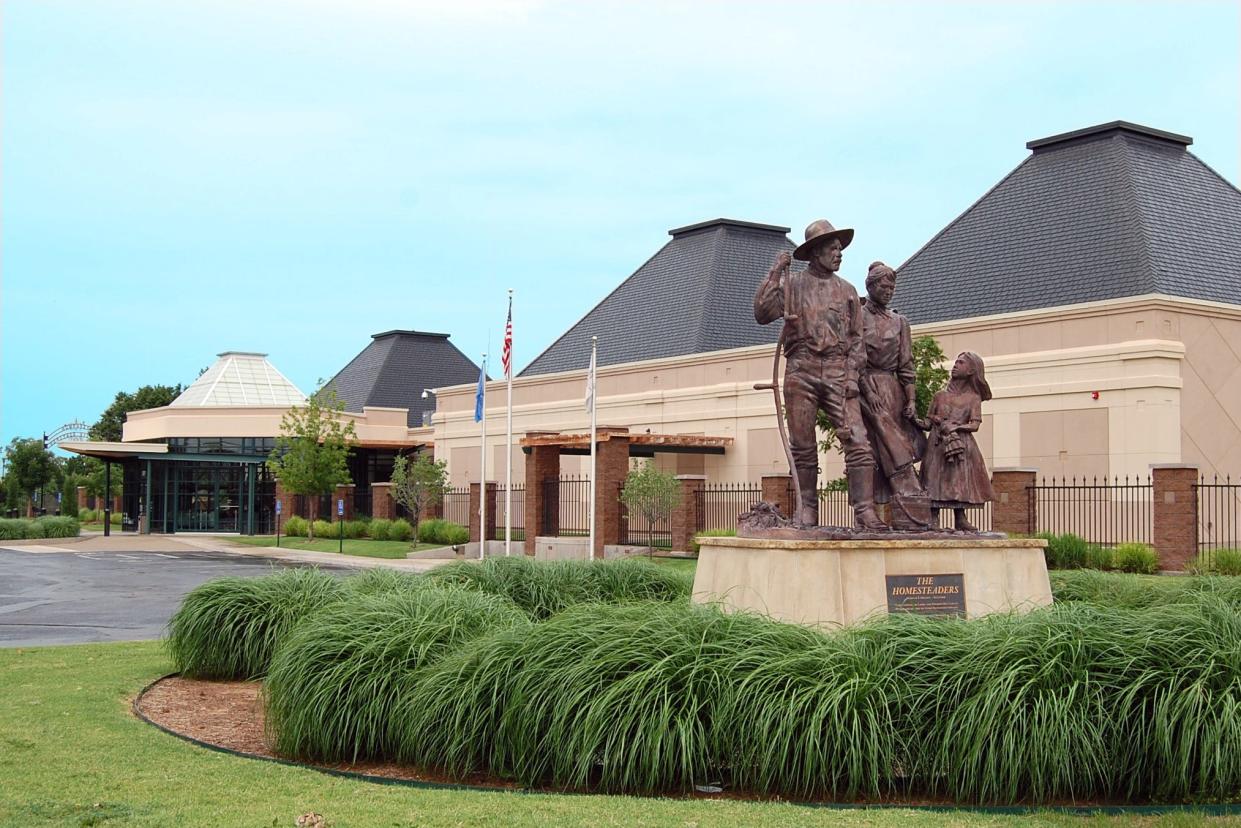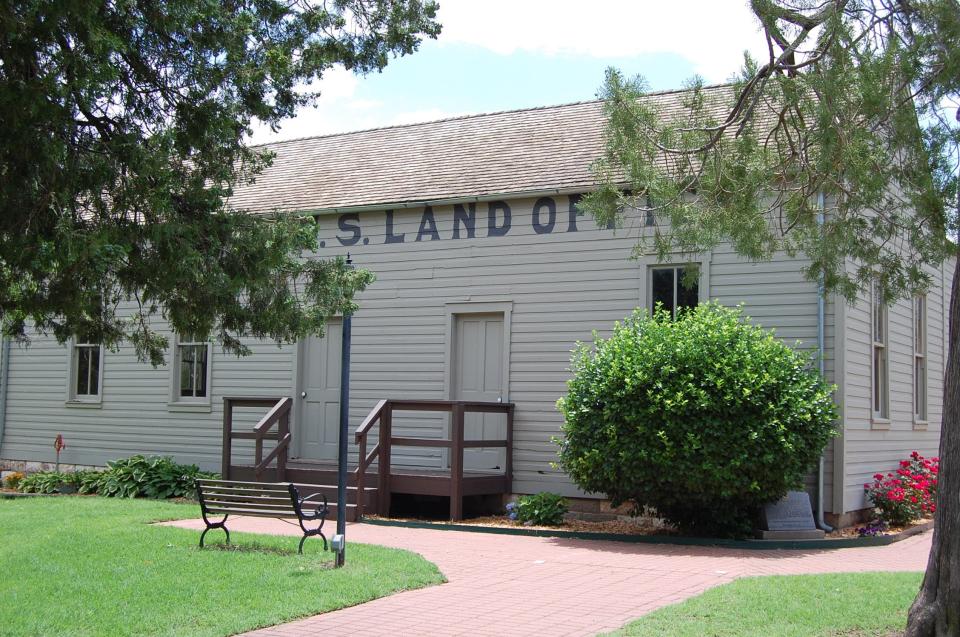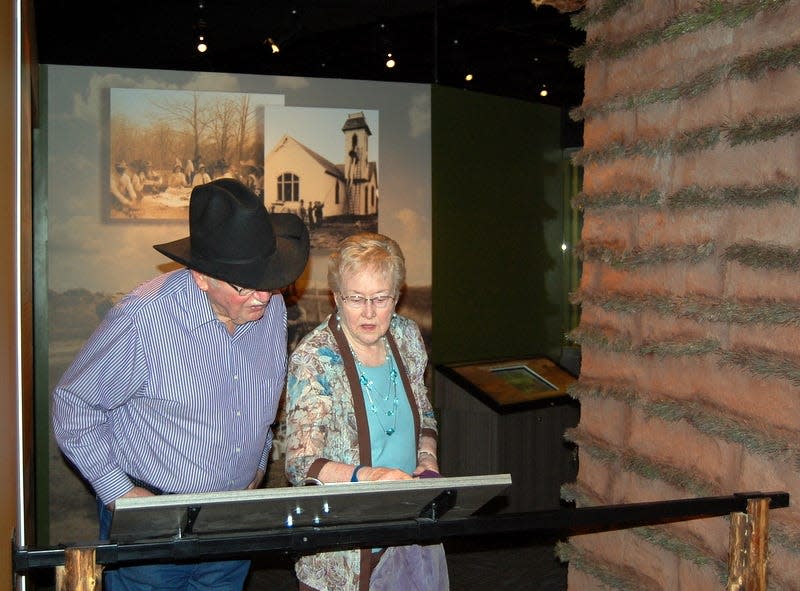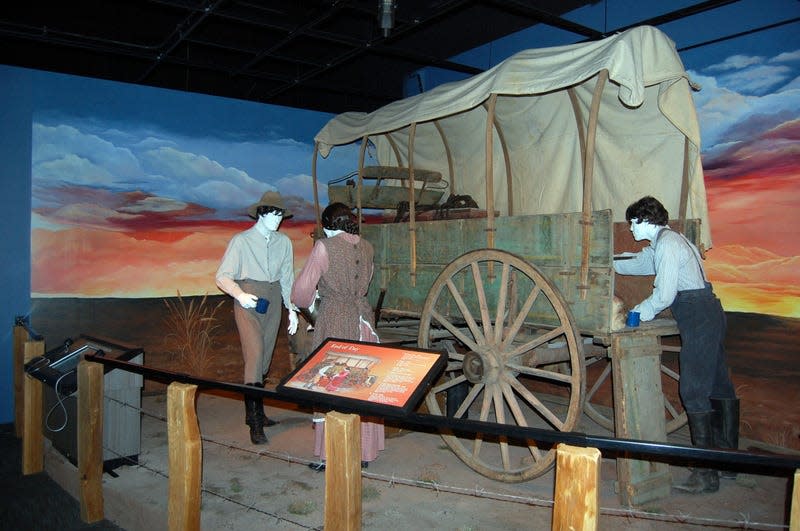Discover Oklahoma: Cherokee Strip center in Enid tells story of northwestern Oklahoma

As a student of history, I continue to be enthralled traveling the state and learning more about a specific area’s past.
Recently, we were videotaping an upcoming episode of "Discover Oklahoma" at the Cherokee Strip Regional Heritage Center in Enid. It had been a few years since I had been there, but yet being at the center on the same day as quite a few students, I found myself looking at the kids’ faces as the tour guides told them of the fascinating history of northwestern Oklahoma.
What you will find at the center is a story of how people in that area started to live.
“The region was opened for public settlement in 1893 in the midst of one of the biggest economic depressions the United States had seen up to that point in time. Many people were moving into the old Cherokee Outlet, looking for a fresh start, and hoping to find ways of being self-sufficient in a desperate time,” said Jacob Krumwiede, director of the Cherokee Strip Regional Heritage Center.
“The people who settled the region would eventually not only find ways to survive the Great Plains, but would also find ways to thrive, as well. Our history is important, because it doesn’t just tell the story of the geographic region of northwestern Oklahoma. It tells the story of us.”
Those stories are told through a variety of impressive ways, including one large gallery broken up into five distinct sections — a research center, interactive exhibits and various programs. It all began with the land run of 1893, the largest land run in all of Oklahoma. People don’t realize how uniquely Oklahoma was settled. There were actually seven land runs, with the Cherokee Strip land run being the largest. Over 100,000 people made the run for 40,000 plots of land.

The Humphrey Heritage Historic Village is part of the complex at the Cherokee Strip Regional Heritage Center. It consists of several buildings, including the only remaining land run office from the 1893 run. You also will find a one-room school, a church and a homestead. The land run office is particularly fascinating to me. I can envision walking into that building and seeing the three registrars just incredibly busy trying to handle the 10,000 people who came through in the afternoon and wanted their land at that moment. Keep in mind when you step into that land office, you are actually in the building where people came to file their claims. It is history you can see, touch, smell and feel.
But back inside the Heritage Center, a permanent gallery tells this historic story chronologically starting at the point of the run. Walking through the center, one gets a real sense of the hope and importance all those people who made the run felt about what was going to be a new beginning for them.

“At the most basic level, we want all visitors to walk away with a smile. Whether visitors are local, regional, national or international in origin, we want them to have an enlightening and enjoyable experience, “ says Neal Matherne, director of education for the Heritage Center.
“I want visitors to leave with the desire for more answers. Our exhibits, objects and buildings tell many stories, but not all of them. I want our local visitors to leave our museum with a hunger to discover their own unique story and find their place within the history of northwestern Oklahoma.”
Matherne adds “I want our out-of-state visitors to return to their home with a new curiosity about their own late 19th/early 20th century histories.”
For those interested in events coming up this summer at the Heritage Center, you are in luck as there is quite a bit of programming planned. And for those with kids or grandkids, this is an a wonderful place to bring them! Every first and third Sunday of the month, their living history village at the Heritage Center comes “to life” with their living history program “History Alive! On the Cherokee Strip.” They also host monthly programming “after hours” with their “Museum after Dark” events. June 10, during their “Museum after Dark”, they will be hosting one of their ongoing Oklahoma singer songwriter series called Village Sounds, with Enid folk singer, Stacey Sanders. Then on June 16-18, they will be partnering with Enid Chautauqua in the Park where this summer’s scholarly presentations will focus on 1960’s countercultural speakers, writers and artists, such as John Lennon and Timothy Leary.
Oklahomans do have a proud history. And the time traveling starting point by which to begin that historic journey of exploration can certainly be the Cherokee Strip Regional Heritage Center in Enid.

For a comprehensive list of other historic museums across the state, go to Travelok.com.
Dino Lalli is the co-host and one of the feature reporters for the weekly television travel show "Discover Oklahoma."
This article originally appeared on Oklahoman: Cherokee Strip center in Enid shares history of northwestern Oklahoma

